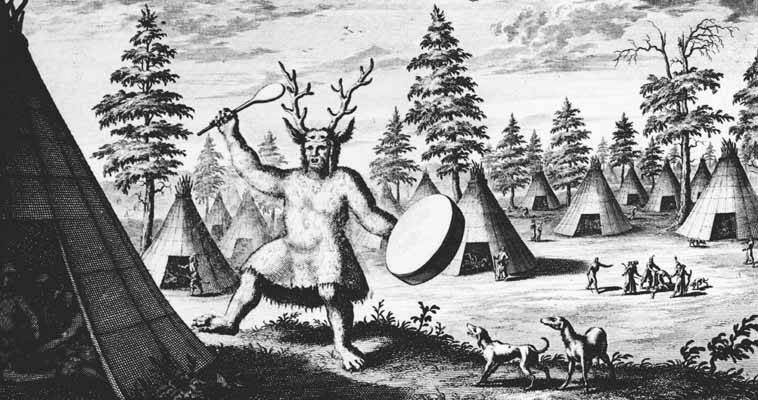Shamanism, one of the world’s oldest magico-religious practices, is as diverse as the cultures in which it has been practiced. Rooted in animistic cosmologies, shamanic traditions reflect the spiritual landscapes of hunter-gatherer and pastoralist societies, though they extend beyond these contexts. This cultural grounding makes shamanism inherently adaptable, allowing it to coexist with, and even integrate into, a variety of belief systems.
The Foundations of Shamanism
At its core, shamanism involves techniques that alter the shaman’s state of consciousness, facilitating communication with spirits or other metaphysical entities. These interactions aim to heal, gain insights, or perform tasks on behalf of individuals or communities. The shaman transcends the human condition, becoming "of the spirits" temporarily, a process that relies heavily on the cultural and environmental context of the practice.
Etymologically, the term "shaman" originates from the Tungusic word samān, meaning "he who knows." Over time, academics have applied this term broadly to describe similar practices worldwide. While the precise origins of shamanism are debated, archaeological and linguistic evidence suggests that these practices may date back as far as 60,000–70,000 years. This longevity has made shamanism one of the oldest and most studied magico-religious traditions in human history.

An illustration of a Shaman in Siberia, produced by the Dutch explorer Nicolaes Witsen in the late 17th century. It is the earliest known pictorial depiction of a Siberian shaman to have appeared in Europe
Shamanism and Cultural Adaptation
Shamanism’s flexibility is evident in its ability to adapt to various cultural and religious frameworks. Traditional indigenous practitioners often view shamanism as a practice rather than a religion, allowing it to coexist with other belief systems. For example, Yellow Shamanism in Mongolia developed in response to the spread of Buddhism, blending Buddhist concepts with shamanic traditions. This demonstrates the practice’s ability to incorporate elements of dominant religious systems while maintaining its core animistic worldview.
In contrast, Neo-shamanism, popularized in the West by figures like Carlos Castaneda and Michael Harner, reflects contemporary values and beliefs. Harner’s Core Shamanism, for instance, distills shamanic techniques into a framework accessible to individuals outside traditional cultural contexts. While Neo-shamanism has diverged significantly from its indigenous roots, its emergence highlights the practice’s capacity to resonate across vastly different cultural landscapes.

Shamanism is global in its spread for it is a multifaceted culturally informed magico religious psychobiological practice.
Challenges of Integration
Despite its adaptability, shamanism’s integration into other belief systems is not without challenges. Traditional shamanic practices often emphasize the importance of living in harmony with nature, a perspective that can clash with the industrialized, technology-driven worldview of contemporary societies. Moreover, the spiritual authority of shamans is traditionally derived from their selection by spirits, familial lineage, or cultural validation—criteria that may be overlooked or altered in modern interpretations.
There is also a grey area when it comes to the limits of shamanic ability in contrast with other magico-religious practitioners. More than a few ritual activities in the ethnographic literature could be considered the purview of sorcery or witchcraft in other cultural or historic contexts and vice versa. This has been an endless source of confusion for academics. However within certain limitations this may in fact allow the shaman to learn and incorporate a vast quantity of magico-religious practices and rituals into their own. However as Eliade states:
'Magic and magicians are to be found more or less all over the world, whereas shamanism exhibits a particular magical specialty: “mastery over fire”, “magical flight,” and so on. By virtue of this fact, though a shaman is, among other things, a magician, not every magician can properly be termed a shaman. The same distinction must be applied in regard to shamanic healing; every medicine man is a healer, but the shaman employs a method that is his and his alone. Hence any ecstatic cannot be considered a shaman.’ (Eliade 1989, p 5). Eliade later describes shamanism as a ‘technique of ecstasy’ and the shaman ‘the great master of ecstasy’. (Eliade 1989). Though such terms may be considered outdated this text helps to clarify some of the limits and boundaries of integration shamanism.
The Universality and Limits of Flexibility
The ability of shamanism to coexist with various beliefs lies in its focus on practice rather than dogma. Unlike religions with fixed theological frameworks, shamanism’s techniques and rituals are inherently dynamic, designed to meet the needs of specific communities and contexts. However, this flexibility has its limits. Traditional indigenous shamanism often resists the values and assumptions of contemporary Western societies, particularly those that prioritize individual autonomy over communal or spiritual obligations. To be a shaman is to uphold a duty to aid ones community, it is not about individual profit, ones magnificence (ego), or personal power. In Mongolia I found such individuals who sought out shamanic powers for these reasons are referred to as 'Fake shamans'. In contemporary literature they are often referred to as 'Plastic shamans'.

Balance between tradition and modernity whilst knowing the limits of shamanism is key.
Conclusion
Shamanism’s history and global reach reveal it as a practice both deeply rooted in specific cultural contexts and remarkably adaptable to new ones. Its ability to integrate with various belief systems speaks to its enduring relevance. However, maintaining a respectful understanding of its origins and traditional forms is essential. By acknowledging both the flexibility and boundaries of shamanism, practitioners and scholars alike can appreciate the complexity of this ancient and multifaceted phenomenon.


Add comment
Comments